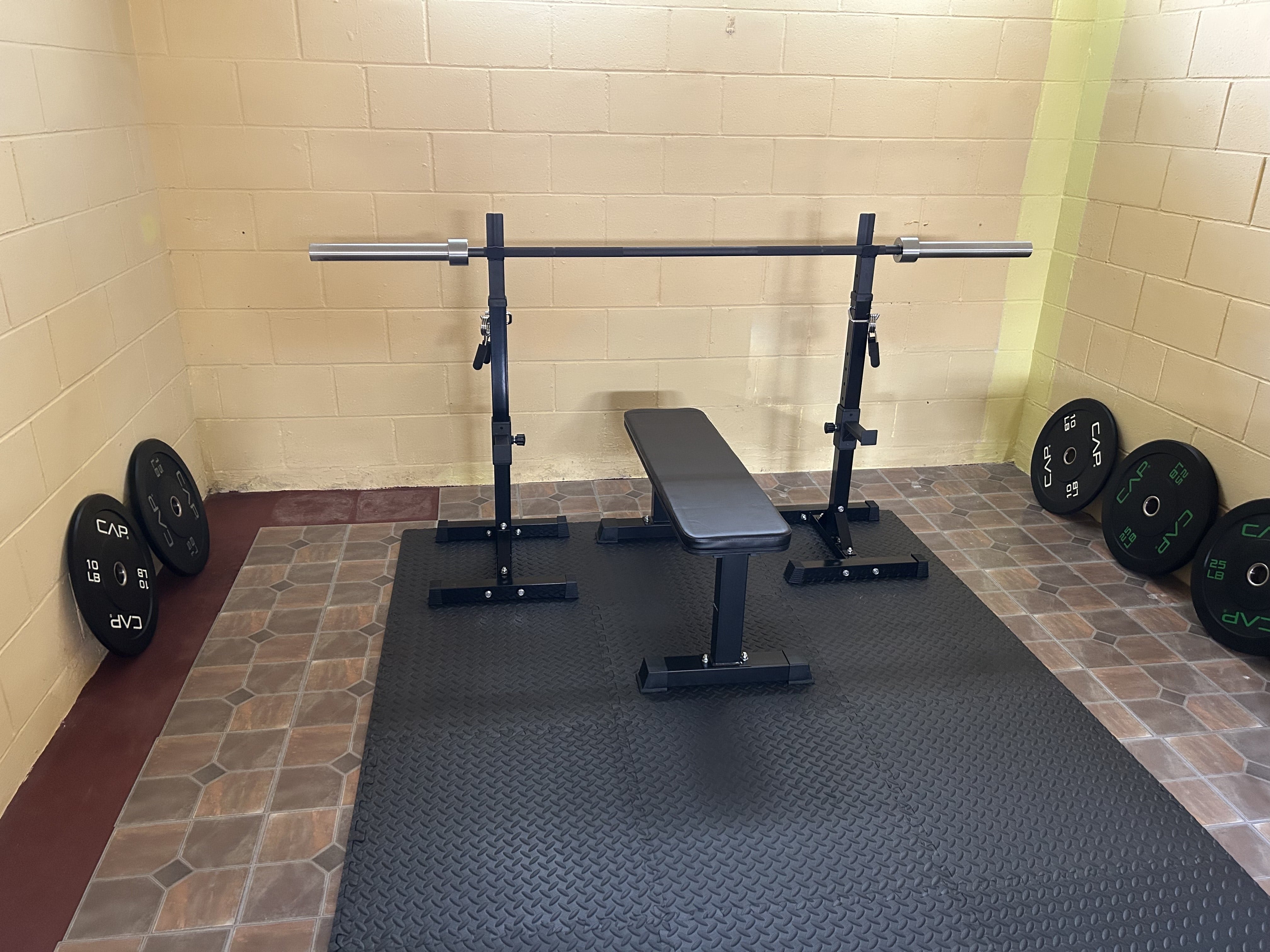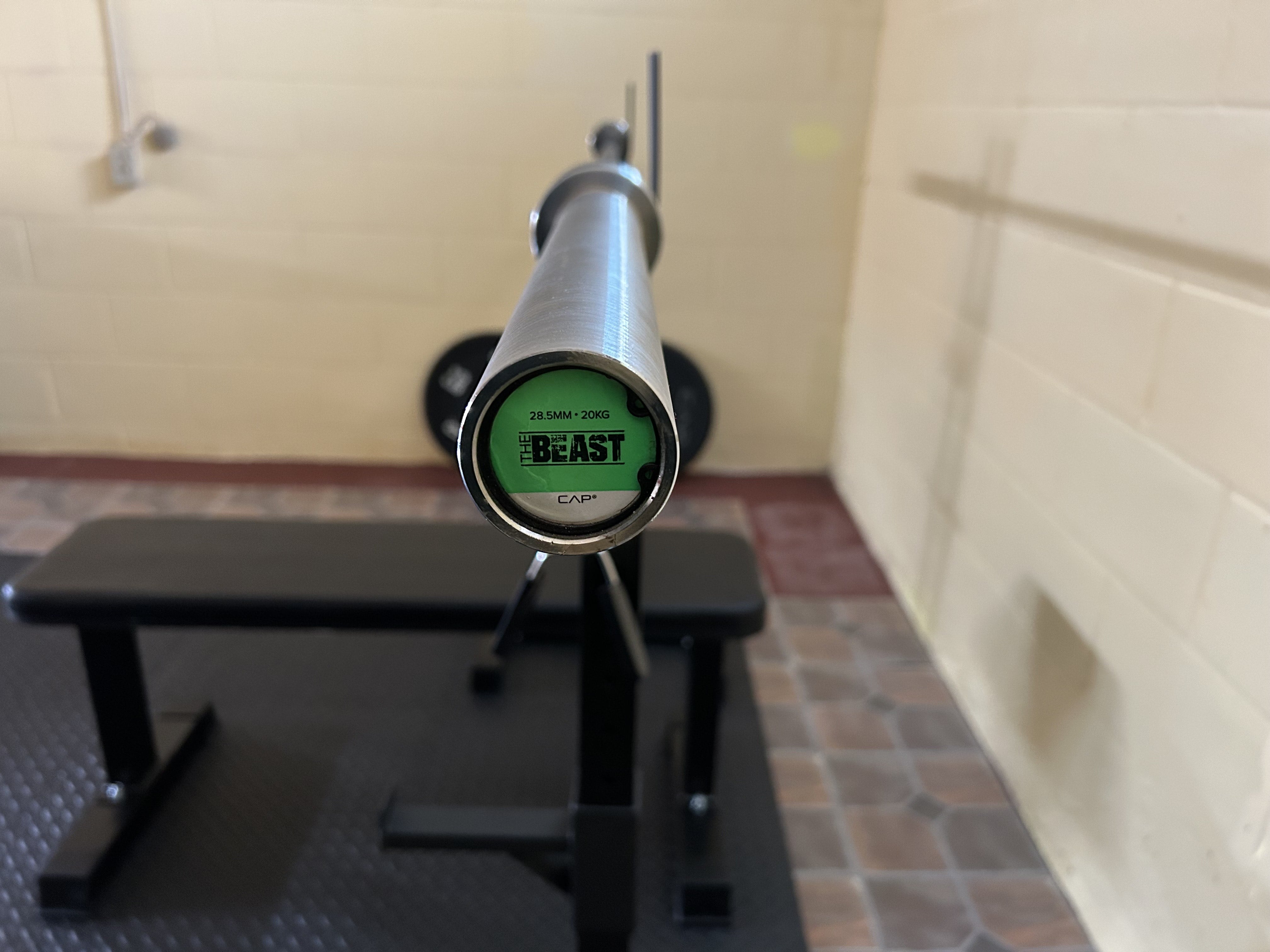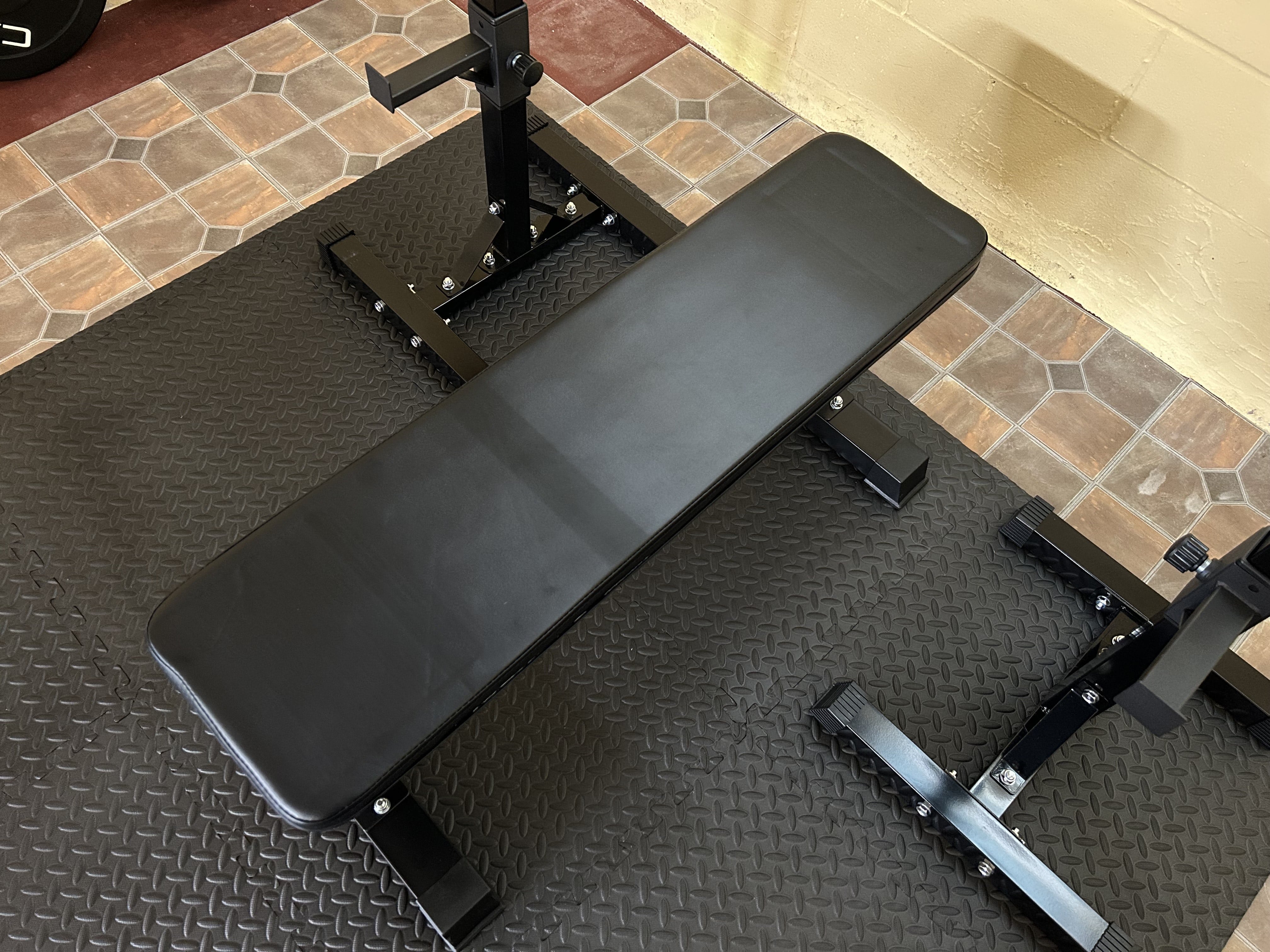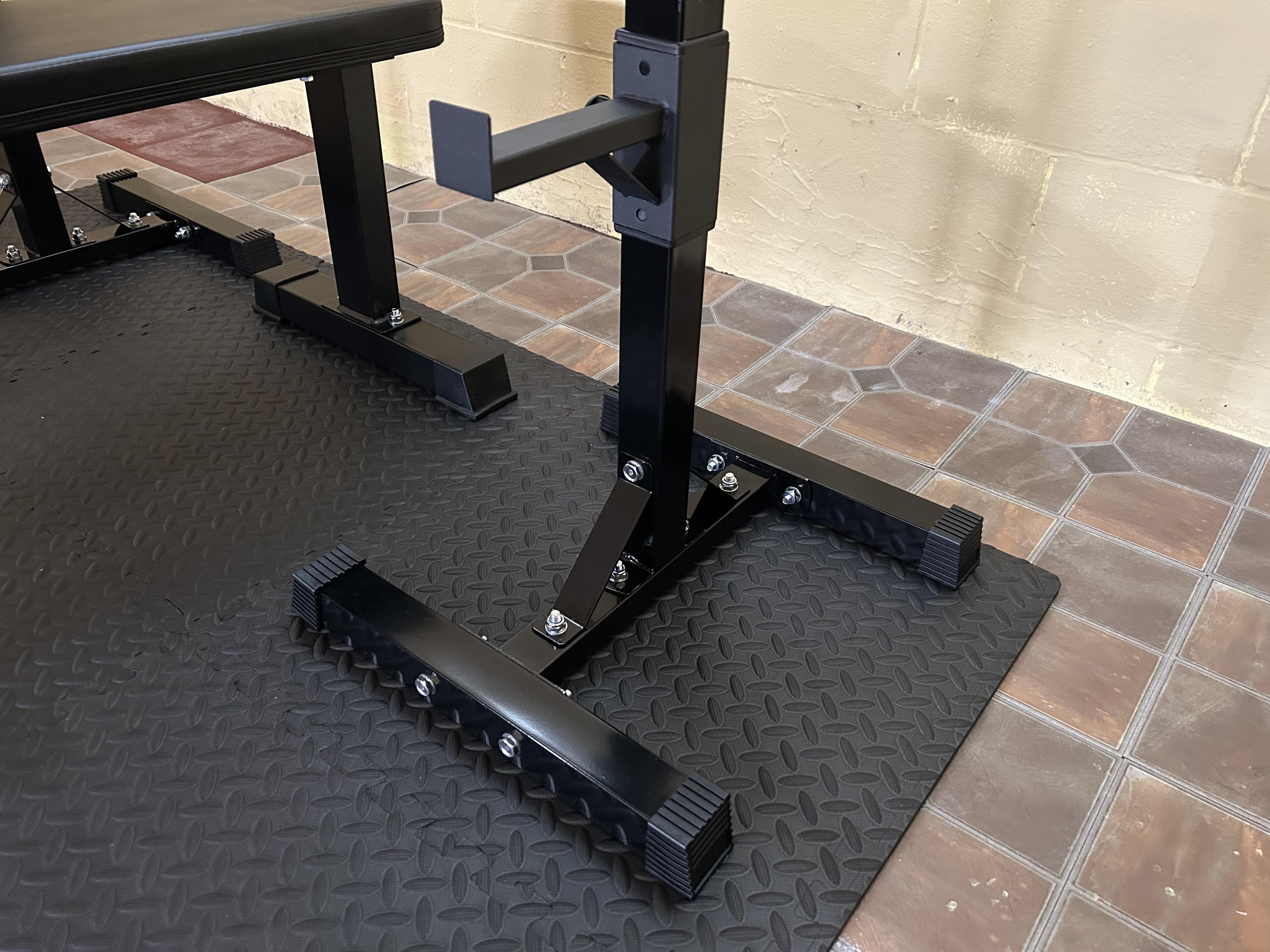Basement Gym
31 October 2025
I recently moved to Wisconsin (yes, sadly I had to sell my first house in Indiana) and I'm renting a house here for the next year. This new house has a basement as well, and this time I decided that I'd build a small gym down there for weightlifting.
Setup
I wanted to keep it simple. The purpose of this setup is two-fold:
- I want to increase my strength (calisthenics can only take you so far for raw strength);
- I don't want to pay for or travel to a gym.
For now, I'm focusing on bench press, squats, and dead lifts with this setup.
The actual barbell/weight part of the setup will last me a lifetime; the bench and rack perhaps not, but they are also not very featured, so they might be upgraded down the line anyway. I will need to transport this setup when we move again in a year, so minimal is preferable right now. The bench and the rack were also very affordable, so even if I decide I'd rather sell or donate them than transport them, I wouldn't be taking a huge hit.
Here's a quick rundown of the setup, with links included if you're interested in replicating it:
- 7' Olympic barbell
- 100lb weight plate set (2x25lb, 2x15lb, 2x10lb)
- Pair of free-standing steel squat/bench press stands
- Bench
- EVA foam floor tiles
The setup was purchased entirely from Amazon (the fact that this was possible surprised me, but I guess you can get anything from there). The total cost was around $450.
Thanks to my friend Nick for his weightlifting expertise and for helping me to curate this setup.
Here are some pics.






Limitations
Currently, I don't have a way to do pull-ups, which is something I'd like the setup to accommodate. There are more featured racks available that have a bar across the top which can be used for pull-ups, but I couldn't get one of those due to the height of the basement ceiling (too short).
I will try to find a solution to the pull-up issue eventually — maybe I can get a dedicated pull-up bar. For now, I'm focusing on bench press, squats, and dead lifts.
— Derek Andersen